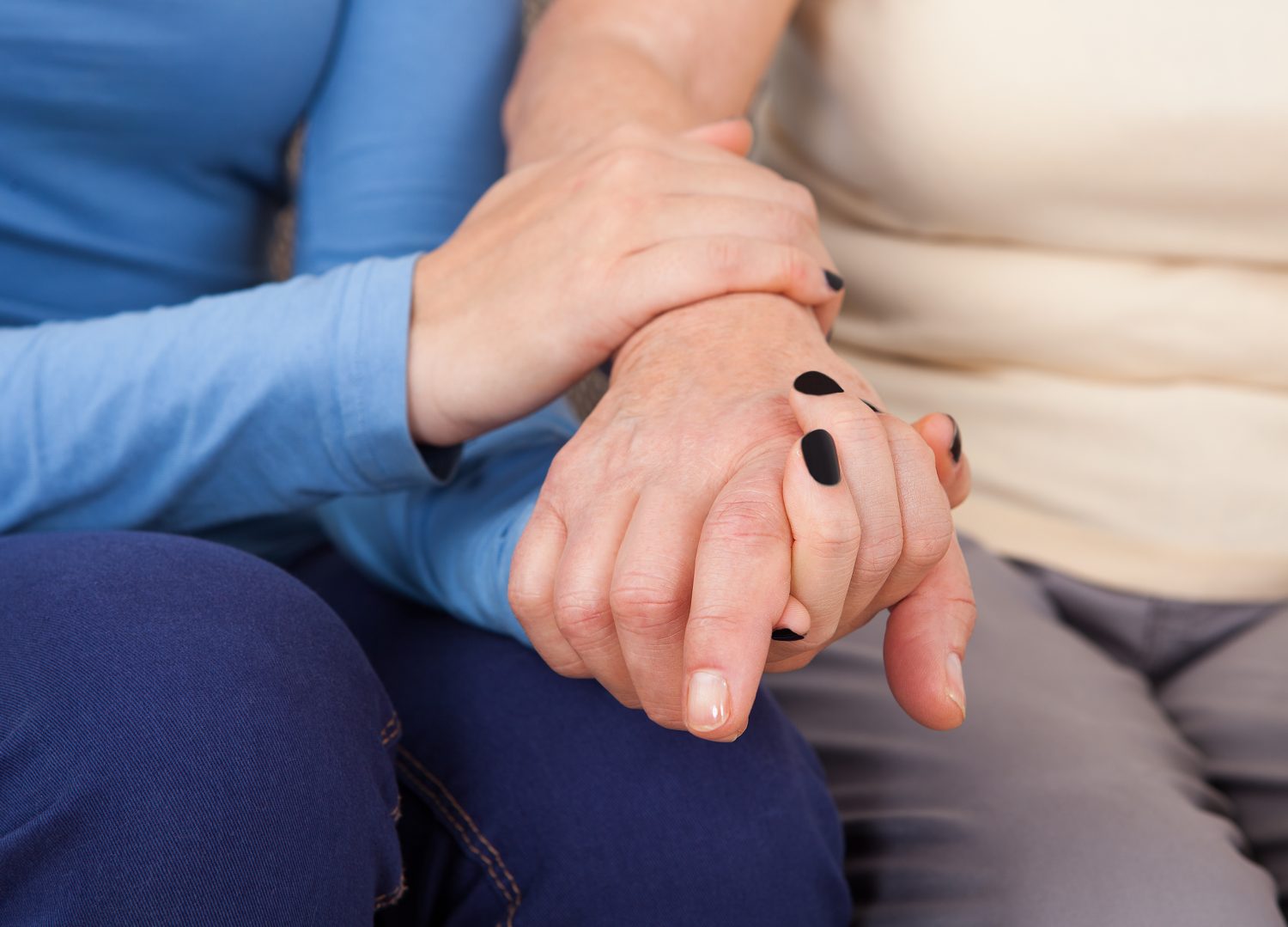There’s a disconnect. Between you and other people. Between you and yourself. Between you and life.
An emptiness so acute its painful.
You want to live fully. You want to embrace beauty and joy and love and goodness.
Except you don’t.
Because when it comes down to it, you pull back. You see opportunities, but you don’t take them. Instead you bury yourself so deeply in routine that it feels like you might suffocate.
And part of you is okay with that.
But there’s another part that wants something more. It’s time to reach deep inside and pull that part of yourself out.
To breathe life into her.
And doing that is the most important thing you will ever do. Because as you do, she will breathe life into you.
How to Breathe Life into Yourself
To understand how much this matters, consider the alternative. Imagine what will happen if that part of you continues to flounder.
Picture yourself drowning.
Arms flailing, legs kicking, you struggle heroically to say afloat.
Gasping, you take in gulps of air between your calls for help.
Screaming, waving, you finally draw the attention of onlookers, and reach desperately for the outstretched arm that pulls you to safety.
Except it isn’t like that.
Any lifeguard can tell you: Drowning is silent.
The danger comes when the thrashing and the reaching and the trying to swim stop. When you become still. That is the moment before you slide beneath the surface.
So too is the quiet moment of decision for those submerged in discouragement, grief, or fear. Will you keep reaching, keep swimming—
Or quietly slip beneath the waves?
So how do you find the strength to keep your head above water, when there is a part of you that doesn’t really want to try?
How to Find the Ground Beneath Your Feet
Your journey out to sea was different than mine. Maybe it started with disappointment, loneliness, or trauma. It could have been chronic pain or substance use. It could have been triggered by mental illness—depression, anxiety, or borderline personality disorder, among others. Or maybe you’ve been drifting so long that you can’t event pinpoint when it started.
For me the journey was about loss. Picture a cold, Sunday morning in January. My husband Don and I were still in bed, our legs entwined, my head on his chest.
“We have it,” he said to me. “We have the dream that everyone else is searching for.”
And we did. Twenty-six years and six children after our high-school romance began, our love ran deeper than words. He was at the heart of every dream I had for my future.
Five days later, Don was diagnosed with terminal cancer.
Ten months later I held his hand as he died.
My grief was overwhelming. Immobilizing. All encompassing.
I still walk with that grief every day. But I also walk with and wonder and beauty, and even peace.
You can live fully again. You can experience fulfillment, purpose, and joy, no matter how deep the discouragement feels now. There are key steps you can take to help you want to swim again, and to make it out of that deep water. These are the insights that have felt like oxygen in my lungs and ground beneath my feet in my own journey back to shore.
How to Plug back into Life
Do you feel disconnected from joy? From purpose? From yourself?
That’s called dissociation. Psychologists describe it as a defense mechanism. That’s because it’s a way to get through an emergency situation.
Think about a time when you had to deal with an immediate crisis, like an accident or serious injury. You probably remember “going through the motions” without feeling much. That’s dissociation.
In the short term, dissociation totally helps. You probably couldn’t have accomplished what you needed to do in that crisis if you were dealing with a bunch of emotion at the same time. You may also remember those emotions “turning on” again when the crisis passed—sometimes in a rush.
It’s something that everyone experiences from time to time. Dissociation can be as mild as not feeling your feelings, or as intense as forgetting your own identity (although that is rare).
But what does that have to do with you now?
Many of us disconnect not only from overwhelming feelings in an emergency, but also from other feelings we’d rather not experience—things like grief, fear, and sadness. And then never turn them back on.
Problem is, living an emotionally shut down life is painful in itself. When you shut down uncomfortable emotions, you also shut down positive emotions like joy and excitement, so life feels empty. Not experiencing human emotions hurts. Being disconnected hurts.
The first step to wanting to live fully is to plug yourself back into the experience of life. Because that’s what will make life worthwhile again. You do that by living in the moment, being present in your body and feeling your feelings.
How to Experience Joy
Joy is in the moment.
It comes in that moment when you step out of your head—away from the worries and regrets—and absorb yourself in the beauty of now.
Regardless of what is happening in your life, there are always moments of beauty. The question is whether you experience them.
In his research with veterans dealing with post-traumatic stress, Phil Zimbardo discovered that most of them were stuck in the past—their brains and bodies on constant repeat of the worst days of their lives.
No surprise, right? That’s sort of the definition of post traumatic stress.
But many therapies actually make the problem worse, by asking people to relive their trauma again and again. Zimbardo’s clients had great success by doing the opposite.
He coached them to focus on the present, and particularly on those things that bring pleasure in the present.
Regardless of what circumstances took you out to sea, you can enjoy life more by noticing and savoring all the large and small moments that make up your day. The first step to doing that is to be present in your own body.
How to Feel Alive
How much of your day do you normally accomplish on autopilot? You can tune back into the present by intentionally experiencing through your five senses. When you are dissociated it can feel like all of your senses are blunted. Food tastes like cardboard. Colors are less vibrant. That’s a signal to reconnect. For example:
Touch:
- Notice the texture of clothing and blankets.
- Walk barefoot and feel the sensation on your feet.
- Instead of rushing through bathing as part of your routine, savor the feeling of water—the pressure, the temperature.
- Choose bath products that build on your sensory experience—soaps, lotions, towels, etc.
- Book a massage.
- Be mindful of differences in temperature: the warmth of sunshine or a warm fire, the cooling sensation of a breeze or an electric fan.
- Engage in hobbies that let you experience the feeling of different textures, like gardening or sculpting.
Smell:
- Take a tip from wine sommeliers and food critics: scent is a key part of taste. Take time to savor the scent of your food.
- Fill your home with smells that you like—fresh flowers, pine boughs, or scented candles.
- Notice the smells you come into contact with throughout the day and the feelings they evoke.
Vision:
- Use color intentionally. Notice how the colors of your clothing and surroundings make you feel.
- Surround yourself with beautiful things: art, plants, photography. Take time to focus on them each day.
- Beautify a corner of your home or workspace.
- Take a walk in nature.
- Make art.
Taste:
- Choose foods for the sensory experience they evoke.
- Eat slowly. Notice texture, temperature, flavor.
- In appreciating food, move beyond “good” or “bad” to notice subtleties like juicy, acidic, spicy, bittersweet, pungent, flakey, chewy, fruity, tart, nutty. Your experience will come alive.
Hearing:
- Notice how your respond to different types of music. Use it intentionally.
- Notice the rhythm of sounds that make up the background of your day. Traffic? Birds? Children? Have you been tensing against the sounds? Try tuning into them instead.
- Is it helpful to have white noise or the sound of running water in the background at certain times?
- Are there sounds that it is helpful to eliminate?
Breathing intentionally is another great way to ground yourself. You can read about a technique used by law enforcement and medical professionals here.
Being grounded in your own body sets the stage for you to be able to feel joy again—by feeling your own feelings.
How to Feel Positive Emotions
You can’t shut down one category of emotion without shutting down the rest as well. When you don’t let yourself feel sadness or fear or anger, you also don’t feel peace or joy. You are left with empty, which is its own kind of pain.
Even worse, empty doesn’t leave.
Emotions come and go. Even those emotions that are so strong they knock you backwards and leave you struggling for breath eventually pass.
Not emptiness.
It aches at you, reminding you of everything that is supposed to be there. Calling you to come and experience being fully human.
So try it.
Open yourself just a bit, to experiencing delight. What was something that made you happy as a child? Swinging in a swing? Riding a bike? Climbing a tree?
Do it now.
Don’t photograph it for social media. Don’t worry about what anyone else thinks. Just be in the moment.
Then do it again. And again.
Invite your spirit to wake up, and to feel alive again.
Of course, if you start to take the lid off of happiness, soon or later you are also going to unpack other emotions. The ones you were avoiding to begin with. And it’s okay. It’s not just the risk you take. It’s a key to your healing.
How to Use Negative Emotions to Bring Joy
Every difficult feeling you meet is an invitation to more joy.
Even the ones that make you want to swing your head back and scream “No!” to the universe until your throat is raw and your lips are cracked and bleeding.
And even the ones that make you want to wrap your arms around your soul and squeeze so tight that no one else can ever possibly reach inside to hurt her again.
Those feelings. All of them.
The deeper pain, the bigger the joy that is possible on the other side.
- You appreciate tenderness more fully when you have experienced unkindness.
- You appreciate success when you have known discouragement.
- You appreciate love when you have felt loneliness.
So sit with them. Allow them to introduce themselves. Listen to the message they have for you. And then let them leave.
Tough emotions don’t have to last forever. No matter how big they are, feelings pass, as long as you don’t hold onto them. When you fight a feeling, it stays. When you refuse to sit down and listen to the message, the feeling stays. But when you let it runs its course, it passes. And your heart is free to move forward: deeper, wiser, and more capable of joy than before.
Your Vibrant Future
You aren’t sure if you want to try.
You tell yourself you should try.
But should doesn’t equal passion. It doesn’t make your heart sing, or lend you the strength to swim when your legs are tired and your arms feel like giving out.
So you dig deeper.
Because underneath should there is something else. Should looks like layers of fear and obligation and discouragement wrapped tight to hold in the pain. But you choose to unwrap it instead.
And somewhere in the middle of all those layers you discover the spark that you thought must have suffocated long ago.
It’s there. Waiting.
And when you see light, and feel warmth—even just a little—you realize that you are ready to swim back to shore.
It’s time to light a fire.
Read about finding peace beyond pain here.
If you are having thoughts of self harm, please contact a mental health professional for help. You are important, and you deserve to feel better.































